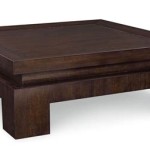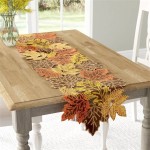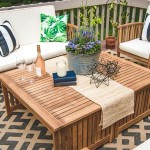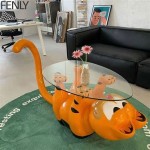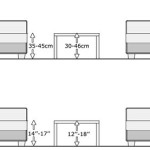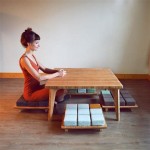Types of Table Setups in Restaurants
Restaurant table setups are crucial for optimizing space, creating ambiance, and ensuring smooth service. Different dining styles and occasions call for specific arrangements, influencing everything from customer comfort to operational efficiency. Understanding the various types of table setups allows restaurant owners and staff to cater effectively to diverse needs and maximize their establishment's potential.
1. Fine Dining Setup
Fine dining establishments prioritize elegance and personalized service. Table setups reflect this focus, featuring high-quality linens, polished silverware, and delicate glassware. Placement is meticulously planned for optimal spacing and privacy.
Key Points: * Crisp, white tablecloths and cloth napkins are standard. * Multiple forks, knives, and spoons are arranged according to the courses. * Wine glasses, water glasses, and potentially other specialized glassware are present. * Charger plates may be used to enhance presentation. * Tables are typically well-spaced to ensure privacy and a quiet atmosphere. * Centerpieces, often floral, add to the sophisticated ambiance. * Proper placement of bread plates, butter knives, and salt and pepper shakers is essential.
2. Casual Dining Setup
Casual dining restaurants offer a more relaxed atmosphere, and table setups reflect this informality. While maintaining a sense of order and cleanliness, casual settings prioritize practicality and efficiency.
Key Points: * Placemats or tablecloths may be used, depending on the restaurant's style. * Basic silverware, including a fork, knife, and spoon, is typically provided. * Water glasses and potentially beverage glasses are placed on the table. * Napkins are usually paper or less formal cloth napkins. * Table spacing can be closer than in fine dining to accommodate more guests. * Minimalist centerpieces or none at all are common.
3. Bistro/Cafe Setup
Bistros and cafes often feature small, intimate spaces. Table setups maximize the available area while fostering a cozy and convivial atmosphere.
Key Points: * Small, square or round tables are common. * Basic silverware and glassware are provided. * Napkins are usually paper. * Table spacing can be close to maximize seating capacity. * Simple centerpieces or none at all are typical. * Menus may be placed on the table or presented by servers.
4. Banquet Setup
Banquet setups are designed for large groups and special events. They prioritize efficient service and accommodate a significant number of guests while maintaining a sense of formality.
Key Points: * Large, round tables are typically used. * Linens, silverware, and glassware are similar to fine dining setups. * Place cards may be used to designate seating arrangements. * Centerpieces are often larger and more elaborate than in other settings. * Adequate spacing between tables allows for movement and service. * A head table for special guests is often incorporated.
5. Buffet Setup
Buffet setups focus on facilitating self-service. Tables are arranged to allow easy access to the buffet line and provide ample space for guests to move around comfortably.
Key Points: * Tables may be smaller and arranged in a less formal manner. * Basic silverware and glassware are usually pre-set. * Napkins are readily available, often in dispensers. * Table spacing allows for easy navigation to and from the buffet. * Minimal or no centerpieces are common to avoid obstructing the flow of traffic.
6. Family-Style Setup
Family-style dining encourages sharing and interaction. Large platters and serving dishes are placed on the table for guests to serve themselves.
Key Points: * Large, round or rectangular tables are common. * Serving utensils are provided for each dish. * Individual plates and silverware are set for each guest. * Water glasses and beverage glasses are standard. * Tablecloths or placemats may be used. * Centerpieces are typically minimal to avoid interfering with serving and sharing.
7. Outdoor/Patio Setup
Outdoor patio setups must consider weather conditions and the surrounding environment. Durability and ease of maintenance are key factors.
Key Points: * Furniture is often made of weather-resistant materials. * Tablecloths and linens may be avoided to prevent damage. * Placemats or bare tables are common. * Disposable or easily cleaned tableware may be utilized. * Umbrellas or other shade structures may be incorporated. * Lighting is essential for evening service. * Table spacing should allow for comfortable movement and account for potential wind conditions.
8. Bar Setup
Bar setups prioritize quick service and casual interaction. High tables and stools encourage mingling and facilitate conversation.
Key Points: * High-top tables and stools are standard. * Cocktail napkins and coasters are provided. * Bar menus are readily available. * Limited or no tableware is typically set, as food is often ordered and served as needed. * Lighting is designed to create a lively atmosphere.
9. Fast Food Setup
Fast food setups prioritize speed and efficiency. Tables and seating arrangements are designed for high turnover and easy cleanup.
Key Points: * Tables are typically small and easy to clean. * Seating may include booths, chairs, or a combination of both. * Condiment dispensers and napkin holders are readily accessible. * Minimal or no table settings are provided, as most food is served in disposable containers. * Tray return areas are often designated for efficient bussing.

Table Setting Diagrams Formal Fine Casual More Set Ups

Table Setting Diagrams Formal Fine Casual More Set Ups

5 Types Of Restaurant Table Setting Every Owner Must Know

Table Setting Diagrams Formal Fine Casual More Set Ups

Proper Table Setting 101 Everything You Need To Know Emily Post

The Three Types Of Table Settings Everyone Should Know Jes

Elegant Service And Table Settings For Waiter Waitress Training

5 Types Of Restaurant Table Setting Every Owner Must Know

The Three Types Of Table Settings Everyone Should Know Jes

The Three Types Of Table Settings Everyone Should Know Jes
Related Posts

